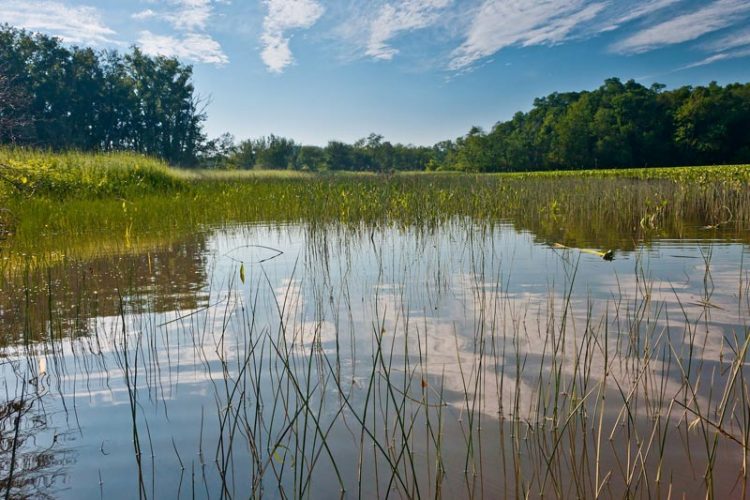Conservation Organizations Need to Keep Up with Nature

Robert Rodriquez Jr. Little Nutton Hook, the conservation project by Scenic Hudson that was featured in the paper.
A new paper authored by a University of Tennessee, Knoxville, professor suggests that in order to cope, conservation organizations need to adapt like the organisms they seek to protect.
The paper, published in Frontiers in Ecology and the Environment, argues that conservation organizations need to be bolder in their adaptation efforts given the rate and extent of the ecological changes that are coming. The article can be found at http://bit.ly/1B7rclb
As the climate warms and other global changes progress, species move outside their historical ranges, new ecological communities form and ecosystems transition to new states. Moreover, scientists are predicting that these changes will accelerate in the future.
“If you are an organization that has focused on conserving particular species in a particular place, as many of today's conservation organizations are, then something has to give—either you need to change your business model or revisit your conservation priorities. And neither is going to be easy for some of these groups,” said Paul Armsworth, lead author and associate professor of ecology and evolutionary biology.
The paper puts forward a number of new ideas for how conservation organizations might address the challenges they are facing. It also highlights stories of success.
For example, Scenic Hudson, an environmental and land conservation group in New York State, has updated the way it prioritizes parts of the landscape for protection to better incorporate a changing climate, especially the impacts of sea-level rise. To get out ahead of the issue, in 2008 the group hired an experienced conservation biologist, created a detailed plan for shifting its land conservation along the Hudson River and developed resources to help local communities along the waterway adapt to rising sea levels.
“Previously, we focused on conserving places that harbor the most important habitats and species today,” said Sacha Spector, Scenic Hudson's director of conservation science.
“But then we looked at the projections for sea-level rise in our region. Continuing with business as usual would have left us quite literally under water. Now when prioritizing sites for protection, we also look to acquire areas upslope to open up the possibility for the habitats we are targeting to migrate as the climate changes.”
Spector said the paper's suggestions were right on target.
“What the authors are saying certainly resonates with our experiences here in the Hudson Valley,” he said. “For example, the authors appeal for conservation organizations to start evaluating over what time period their investments in habitat protection are likely to provide conservation benefits.
We must recognize that if you are in for the long term—as most conservation organizations expect to be—you are going to have to ensure that the investments you make today align with the conditions you expect for the future. This matches very closely with our new approach to protecting the Hudson's tidal habitats.”
The paper was produced by a team of authors from universities, conservation nonprofits and relevant federal agencies.
Contact Information
Amy Blakely
865-974-9748
ablakely@utk.edu
Media Contact
More Information:
http://www.utk.eduAll latest news from the category: Ecology, The Environment and Conservation
This complex theme deals primarily with interactions between organisms and the environmental factors that impact them, but to a greater extent between individual inanimate environmental factors.
innovations-report offers informative reports and articles on topics such as climate protection, landscape conservation, ecological systems, wildlife and nature parks and ecosystem efficiency and balance.
Newest articles

Superradiant atoms could push the boundaries of how precisely time can be measured
Superradiant atoms can help us measure time more precisely than ever. In a new study, researchers from the University of Copenhagen present a new method for measuring the time interval,…

Ion thermoelectric conversion devices for near room temperature
The electrode sheet of the thermoelectric device consists of ionic hydrogel, which is sandwiched between the electrodes to form, and the Prussian blue on the electrode undergoes a redox reaction…

Zap Energy achieves 37-million-degree temperatures in a compact device
New publication reports record electron temperatures for a small-scale, sheared-flow-stabilized Z-pinch fusion device. In the nine decades since humans first produced fusion reactions, only a few fusion technologies have demonstrated…





















